Small-Scale
Carbon Briquetting in China
by Tim Anderson, june 2005
The Chinese make very effective cooking fuel briquettes from waste
cellulose and carbon materials, using local clay for a binder.
The briquettes are cylindrical with a number of air passages through
them.
An expat living here told me he had a water heater in Germany in the
1960's that used the same type of briquettes.
click any image to see a 800x600 version in a new window
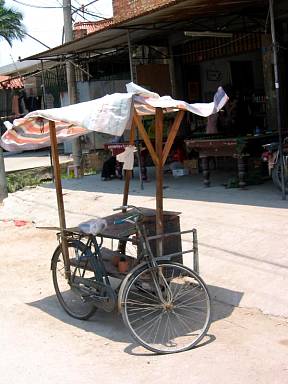
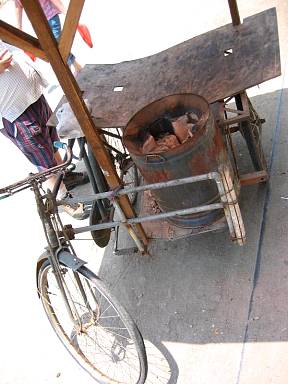
A food vendor's bycicle rickshaw with briquette burner.
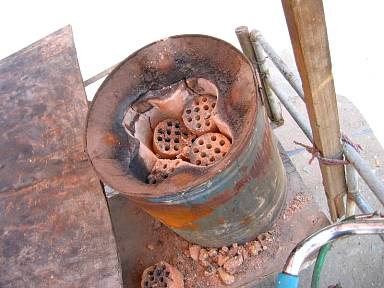
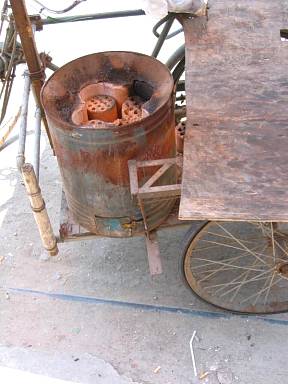
Top and side views of the burner, showing the brick lining and damper
door to control airflow and remove ashes.
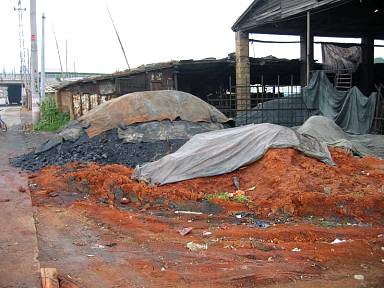
The source materials. Coal dust, carbon from sawdust, farm waste, and
scrap wood is the fuel. The local red clay dirt is the binder.
Sawdust and other carbon-bearing materials such as waste paper are
first reduced to charcoal in a furnace. I have not yet seen this part
of the process.
Coal dust is used as is. They are ground to a certain size and mixed
with the local red clay dirt. The ratio is 80% coal to 20% clay.
At the same time they sprinkle it with water from a watering can and
mix in enough water so it will hold together when squeezed by hand.
A certain amound of sand or limestone gravel is present in the dirt and
doesn't seem to cause a problem.
Multiple views of the machine used to produce the briquettes
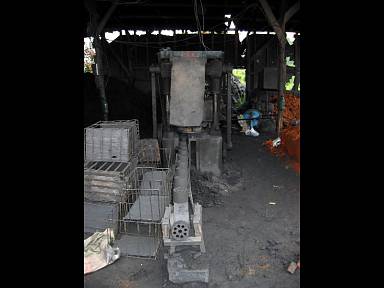
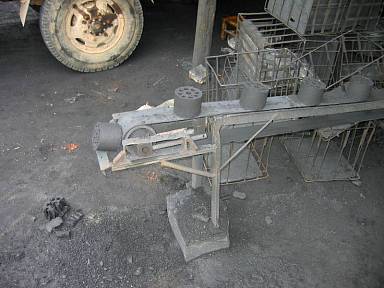
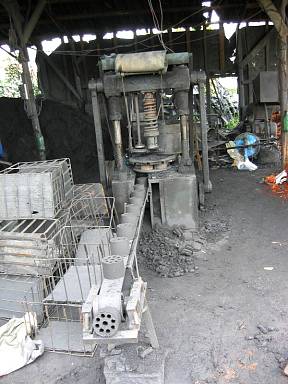
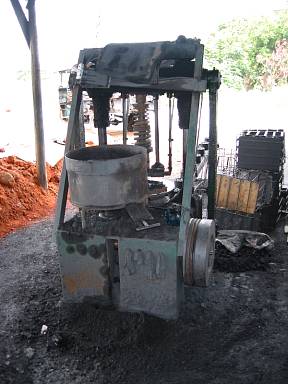
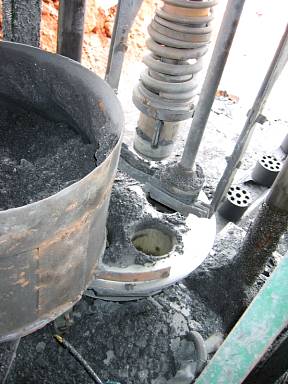
.AVI
movies
of
the briquette maker in action
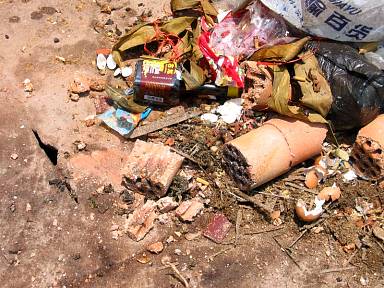
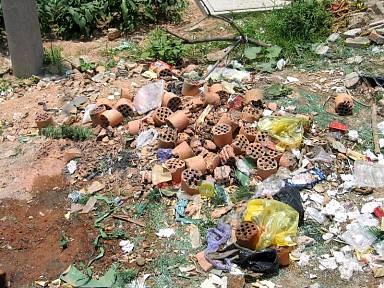
When completely burned, there remains a clinker which is removed with
tongs.
These clinkers are easily crushed by stomping on them.
That seems to make a decent road surface and good soil for growing crops
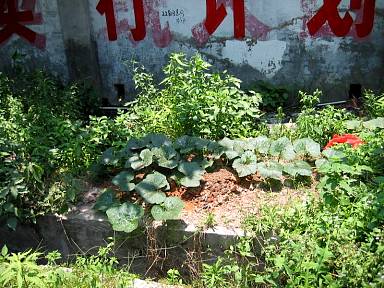
such as this squash plant.
Back to Tim's Home
Copyright 2005 Tim Anderson


















